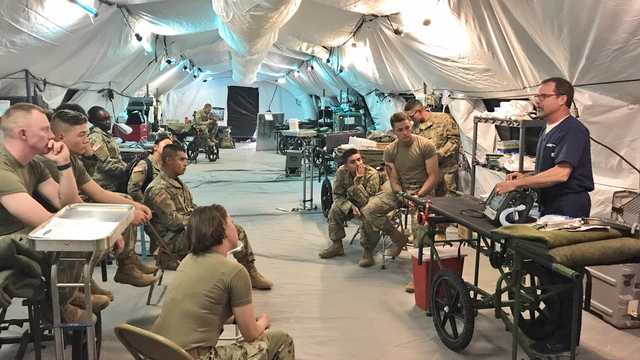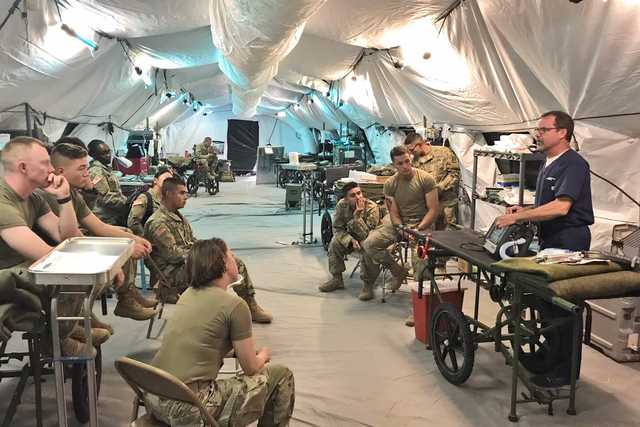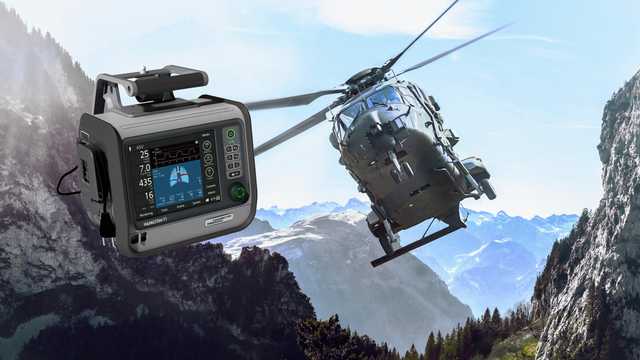
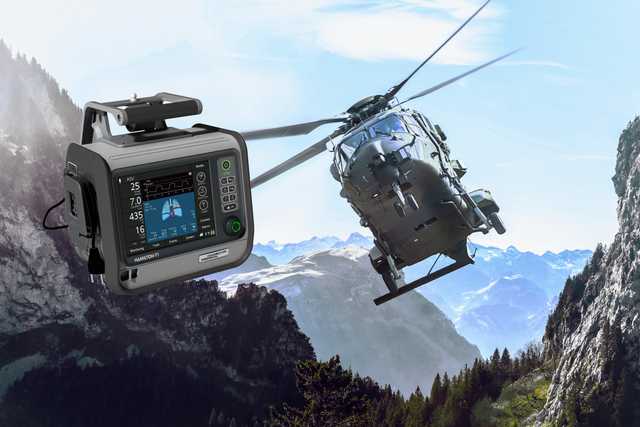
The HAMILTON-T1 Military is our ventilator created especially for armed forces. It is the first device to combine the functionality of a fully featured ICU ventilator with the compactness and ruggedness required for tough conditions. This allows you to offer your patients high-end ventilation support during transport, even in the most challenging environments.
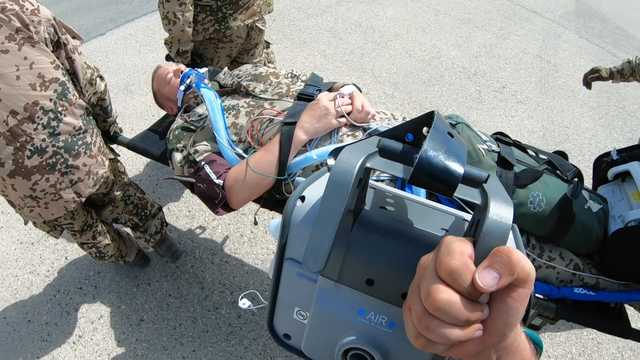
The compact, lightweight design of the HAMILTON-T1 Military helps make handling the ventilator easier.
The water-resistant housing offers impact protection and incorporates a shock-resistant, anti-reflective display, making this ventilator a rugged and reliable companion.
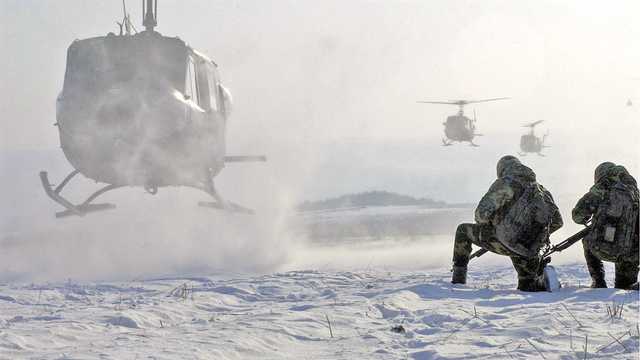
The HAMILTON-T1 Military was designed to withstand demanding environmental conditions, and meets the military standards MIL-STD-810G and MIL-STD-461F. It can operate in temperatures ranging from -15°C up to +50°C, tolerate humidity levels from 5% to 95%, be used at altitudes of up to 25,000 ft, and withstand splashing water or pouring rain (IP54 ingress protection).
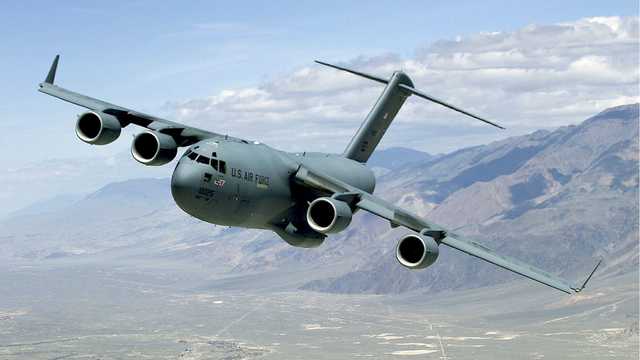
The HAMILTON-T1 meets the transport standards EN 794-3 and ISO 10651-3 for emergency and transport ventilators, EN 1789 for ambulances, EN 13718-1 and RTCA/DO-160G for aircraft, as well as IEC60601-1-12 for basic safety and essential performance. It reliably accompanies your patients to any destination either within or outside of the hospital, by air, land, or sea
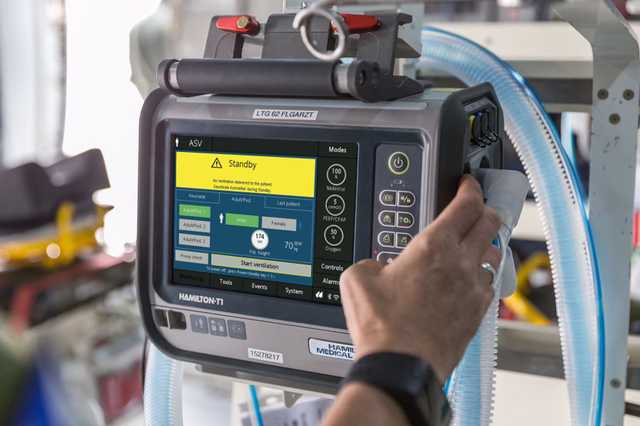
You can define ventilation modes and settings that comply with military operating procedures and clinical practice guidelines for three different patient scenarios.
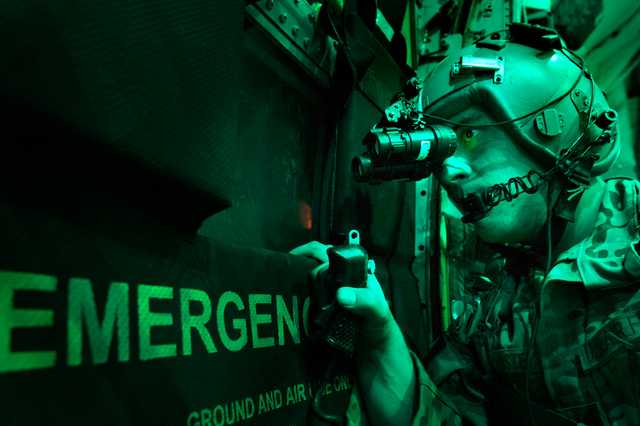
Thanks to the night vision option, you can use the HAMILTON-T1 Military with night vision devices without significantly affecting the pilot’s visibility.
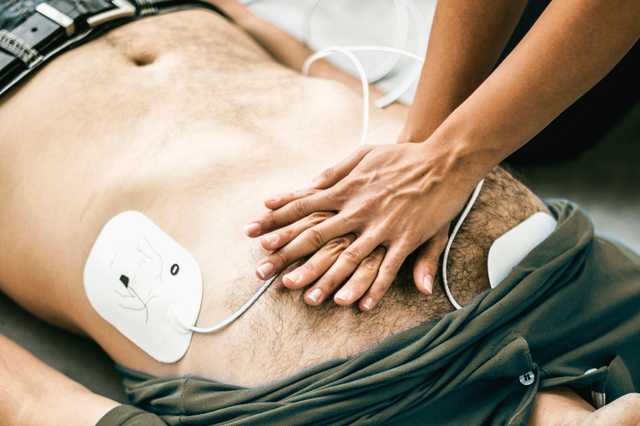
CPR ventilation adapts ventilation settings to situations where you perform CPR. It shows the main monitoring parameters and curves relevant to the situation, and supports your workflow with quick access to preconfigurable settings, adequate alarm and trigger adjustment, and a CPR-timer display (
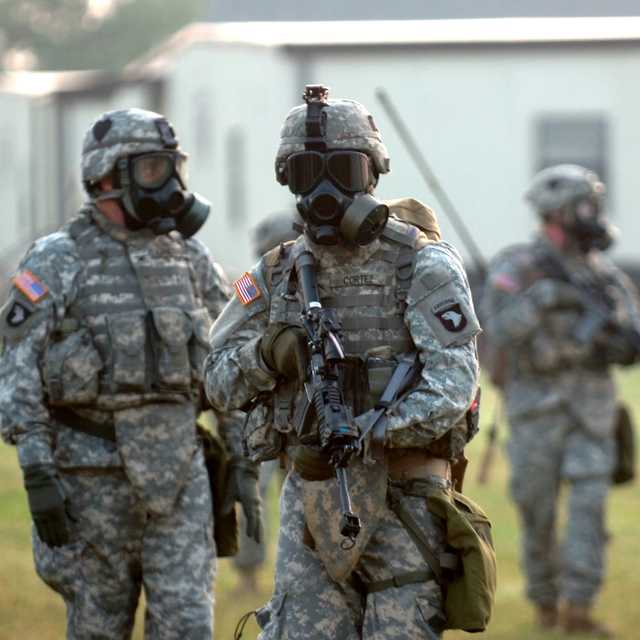
You can order the HAMILTON-T1 Military with an optional NBC filter adapter to attach a standard NBC filter canister. The adapter has a NATO standard thread, compliant with EN 148-1 standards.
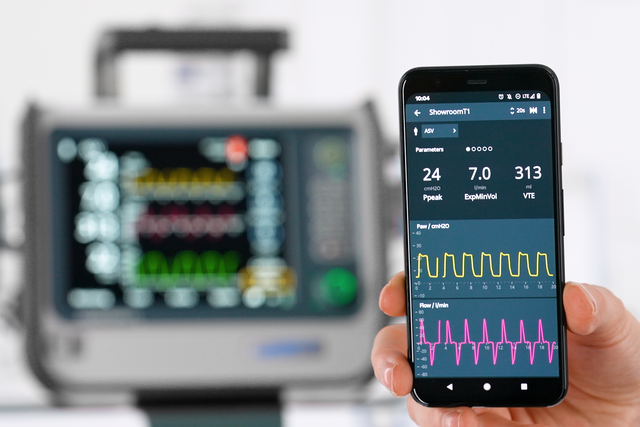
The HAMILTON-T1 Military offers different communication boards allowing connection to CO2 and SpO2 sensors, serial RS-232 interfaces for hospital monitors or patient data management systems, the HAMILTON-H900 humidifier (
In addition, the Hamilton Connect Module provides wireless and wired connectivity protected by state-of-the-art security. It also enables connection with the Hamilton Connect App (
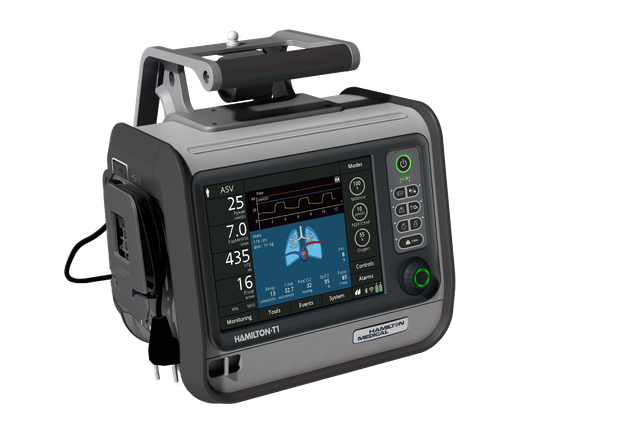
The HAMILTON-T1 Military is outfitted in military gray and black for a more discreet look than the bright red civilian version.
| Patient groups | Adult/Ped, Neonatal |
|---|---|
| Dimensions (W x D x H) | 320 x 220 x 270 mm (ventilation unit) 630 x 630 x 1380 mm (without handle) 630 x 630 x 1433 mm (with handle) |
| Weight | 6.5 kg (14.3 lb) 18.5 kg (40.8 lb) with trolley |
| Monitor size and resolution | 8.4 in (214 mm) diagonal 640 x 480 pixels |
| Detachable monitor | |
| Battery operating time | 4 h with one battery 8 h with two batteries |
| Hot-swappable battery | |
| Air supply | Integrated turbine |
| O2 connector | DISS (CGA 1240) or NIST |
| Connectivity | CO2/Nurse Call/COM1, CO2/SpO2/COM1, CO2/SpO2/Humidifier & COM1, USB port, RJ-45 Ethernet port |
| Loudness | 43 dB in normal operation |
| Volume controlled, flow controlled | |
|---|---|
| Volume targeted, adaptive pressure controlled | |
| Intelligent ventilation | ASV®, INTELLiVENT®-ASV® (option) |
| Noninvasive ventilation | |
| High flow | |
| Visualization of lung mechanics (Dynamic Lung) | |
|---|---|
| Visualization of the patient’s ventilator dependence | |
| Esophageal pressure measurement | |
| Capnography | |
| SpO2 monitoring |
| Recruitability assessment and lung recruitment (P/V Tool Pro) | |
|---|---|
| Patient-ventilator synchronization (IntelliSync+) | |
| CPR ventilation | |
| Hamilton Connect Module | |
| Hamilton Connect App |
| Remote connection to HAMILTON-H900 humidifier | |
|---|---|
| Integrated IntelliCuff cuff pressure controller | |
| Integrated pneumatic nebulizer | |
| Integrated Aerogen nebulizer | |
| Compatibility with Sedaconda ACD-S anesthetic delivery system |
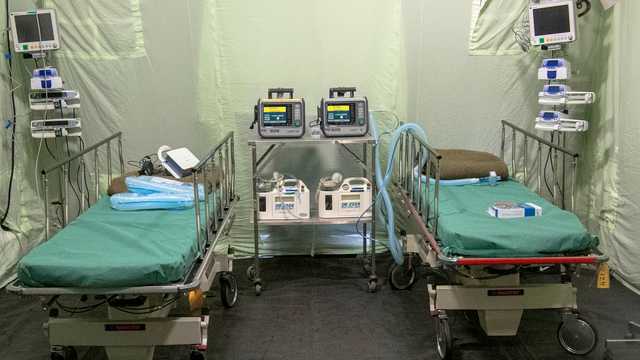
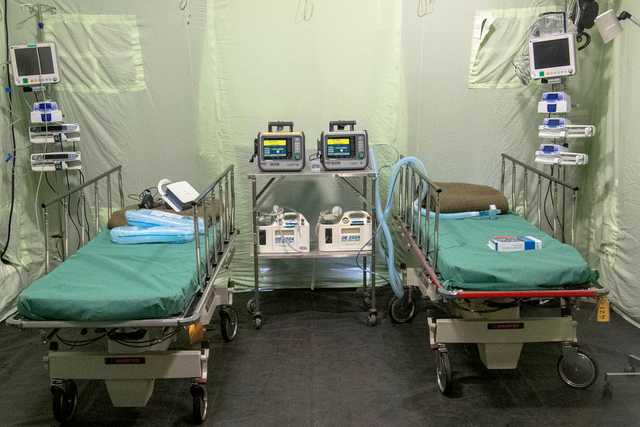
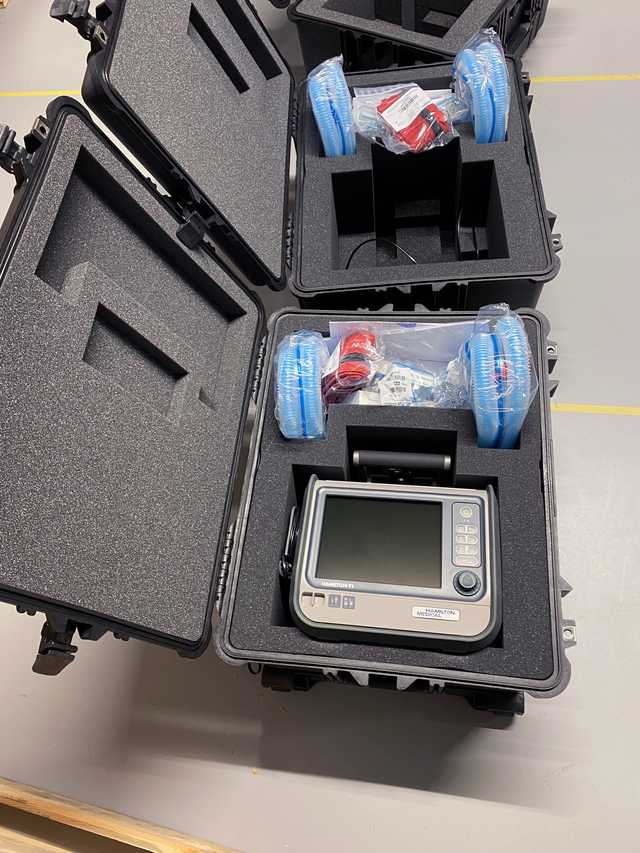
The standardized transport and storage case for the HAMILTON-T1 Military is light in weight, yet robust and watertight enough to protect the ventilator even in harsh environments.
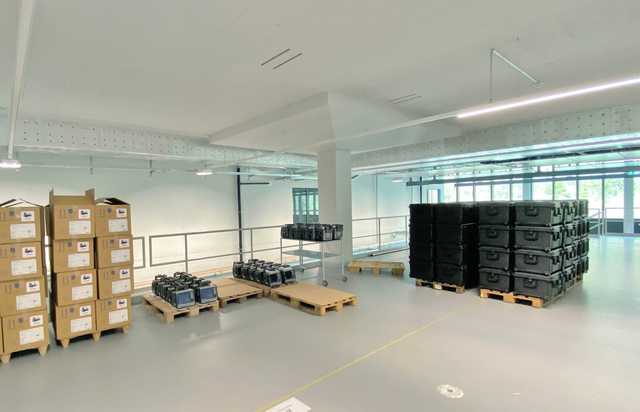
The HAMILTON-T1 Military has been recognized by NATO countries as a standardized material item of supply (NATO Stock Number: 6515-33-211-4889).
In the United States, the HAMILTON-T1 Military can also be ordered through the ECAT catalog.
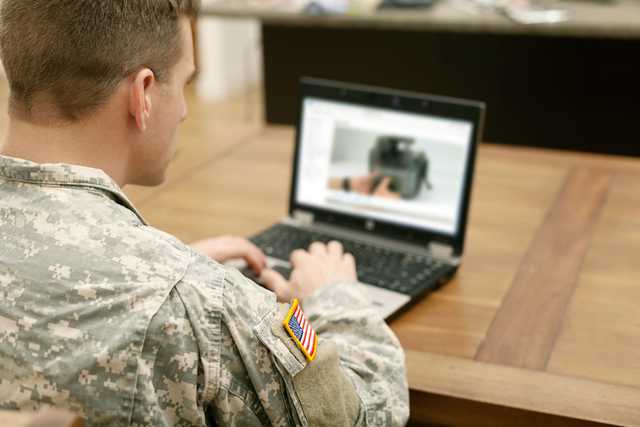
E-learning is an ideal solution for training a large number of users in the field, regardless of the time and place. Hamilton Medical’s free e-learning platform offers modules specific to the HAMILTON-T1 with the option of getting certified. All you need is internet access and a computer or tablet PC.
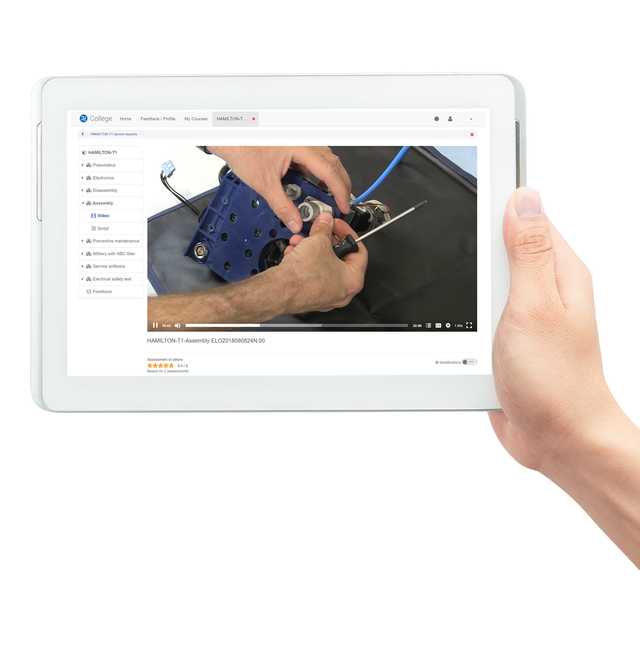
The HAMILTON-T1 Military is field-upgradable so you have access to the latest ventilation technology and product enhancements even in remote locations. In safety-critical areas, your technical staff can be trained to complete maintenance and repairs themselves.
